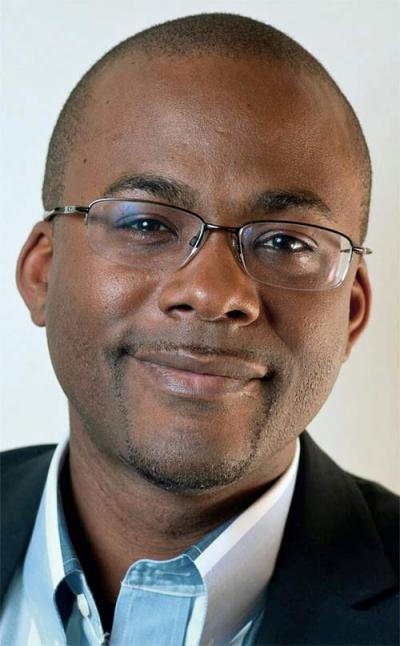

 From will they ever learn department, we are once again seeing attempts by incumbent carriers to skirt rules around network neutrality. They tried and failed with UBB. Now they are at it again with "speed boost" technologies. The two technologies at question are Verizon's "Turbo" service and Roger's "SpeedBoost".
From will they ever learn department, we are once again seeing attempts by incumbent carriers to skirt rules around network neutrality. They tried and failed with UBB. Now they are at it again with "speed boost" technologies. The two technologies at question are Verizon's "Turbo" service and Roger's "SpeedBoost".
 An article appeared in Computer World that alleges: in exchange for the Indian market presence" mobile device manufacturers, including RIM, Nokia, and Apple (collectively defined in the document as RINOA) have agreed to provide backdoor access on their devices. Could it be true that Nokia, RIM and Apple opened up to Government interception?
An article appeared in Computer World that alleges: in exchange for the Indian market presence" mobile device manufacturers, including RIM, Nokia, and Apple (collectively defined in the document as RINOA) have agreed to provide backdoor access on their devices. Could it be true that Nokia, RIM and Apple opened up to Government interception?
 It started with a report in the New York Times, citing a study from Arieso, saying that "Top 1% of Mobile Users Consume Half of World's Bandwidth". Arieso said that part of the reason for the increase in download volumes may be Apple's Siri voice feature on the iPhone 4S which allows consumers to dictate to the phone and enter more text and data... Other news outlets picked up the story and lost all perspective.
It started with a report in the New York Times, citing a study from Arieso, saying that "Top 1% of Mobile Users Consume Half of World's Bandwidth". Arieso said that part of the reason for the increase in download volumes may be Apple's Siri voice feature on the iPhone 4S which allows consumers to dictate to the phone and enter more text and data... Other news outlets picked up the story and lost all perspective.
 2011 has been a significant year for the technology sector globally. Information technology is touching more people in more ways than ever before. Developed markets will be considering a 2012 in which business innovation, competitiveness, and service differentiation are built on ubiquitous broadband, cloud computing, smarter mobile computing, and an increasing plethora of Internet-connected devices. By contrast, securing the technology future for developing markets demands that attention be placed on more fundamental issues.
2011 has been a significant year for the technology sector globally. Information technology is touching more people in more ways than ever before. Developed markets will be considering a 2012 in which business innovation, competitiveness, and service differentiation are built on ubiquitous broadband, cloud computing, smarter mobile computing, and an increasing plethora of Internet-connected devices. By contrast, securing the technology future for developing markets demands that attention be placed on more fundamental issues.
 Before anyone claims victory for the consumer in AT&T's abandonment of its "swinging for the fence" gambit to buy T-Mobile's market share and spectrum, consider what did not make many headlines this week. Both AT&T and Verizon substantially shored up their spectrum stocks with major deals with Qualcomm and several cable companies respectively. Solid hits for both carriers: not homeruns, but very strategic singles and doubles.
Before anyone claims victory for the consumer in AT&T's abandonment of its "swinging for the fence" gambit to buy T-Mobile's market share and spectrum, consider what did not make many headlines this week. Both AT&T and Verizon substantially shored up their spectrum stocks with major deals with Qualcomm and several cable companies respectively. Solid hits for both carriers: not homeruns, but very strategic singles and doubles.
 In a move to be celebrated by many of us with a VoIP background, the United States Federal Communications Commission (FCC) announced today the appointment of Henning Schulzrinne as Chief Technology Officer (CTO). As the release indicates, Henning's role as CTO will be to: ...guide the FCC's work on technology and engineering issues, together with the FCC's Office of Engineering and Technology.
In a move to be celebrated by many of us with a VoIP background, the United States Federal Communications Commission (FCC) announced today the appointment of Henning Schulzrinne as Chief Technology Officer (CTO). As the release indicates, Henning's role as CTO will be to: ...guide the FCC's work on technology and engineering issues, together with the FCC's Office of Engineering and Technology.
 Today, December 14, 2011, the US Federal Communications Commission (FCC) is holding the second of two workshops on the transition of the PSTN to new technologies. The workshop started streaming live this morning at 9:30am US Eastern. The FCC's note about the workshops mentions that people watching the live stream can send in questions to panelists using either of two methods...
Today, December 14, 2011, the US Federal Communications Commission (FCC) is holding the second of two workshops on the transition of the PSTN to new technologies. The workshop started streaming live this morning at 9:30am US Eastern. The FCC's note about the workshops mentions that people watching the live stream can send in questions to panelists using either of two methods...
 If you missed attending or listening to the live stream of the US Federal Communication Commission's (FCC) workshop on the transition of the Public Switched Telephone Network (PSTN) to new technologies that was held last week on December 6th, the FCC has very nicely made a video recording available from their website for viewing... FCC Chairman Julius Genachowski also appeared briefly to provide a few comments.
If you missed attending or listening to the live stream of the US Federal Communication Commission's (FCC) workshop on the transition of the Public Switched Telephone Network (PSTN) to new technologies that was held last week on December 6th, the FCC has very nicely made a video recording available from their website for viewing... FCC Chairman Julius Genachowski also appeared briefly to provide a few comments.
 Now that we're 20 years past TN 2.0, well into the 21st century, and onto the 3rd generation of the web; it is about time we move telephone numbers into the Internet age. They are still managed as if they all connect to four copper wires. We manage to the lowest common denominator rather than acknowledging the power of mobility and Internet technology.
Now that we're 20 years past TN 2.0, well into the 21st century, and onto the 3rd generation of the web; it is about time we move telephone numbers into the Internet age. They are still managed as if they all connect to four copper wires. We manage to the lowest common denominator rather than acknowledging the power of mobility and Internet technology.
 As handheld devices grow ever more sophisticated and demand for content-rich services such as mobile video increases, mobile data traffic is likely to continue growing at an explosive rate. This represents good news for the industry, but next-generation wireless technologies will need to be ready to meet the challenge and able to cope with these increased demands on bandwidth. A recent TD-LTE spectrum workshop looked at the potential of TD-LTE technology to take us on to the next stage of wireless communication.
As handheld devices grow ever more sophisticated and demand for content-rich services such as mobile video increases, mobile data traffic is likely to continue growing at an explosive rate. This represents good news for the industry, but next-generation wireless technologies will need to be ready to meet the challenge and able to cope with these increased demands on bandwidth. A recent TD-LTE spectrum workshop looked at the potential of TD-LTE technology to take us on to the next stage of wireless communication.